Hampi India
Peble Jeine
The austere, grandiose site of Hampi was the last capital of the last great Hindu Kingdom of Vijayanagar. Its fabulously rich princes built Dravidian temples and palaces which won the admiration of travellers between the 14th and 16th centuries. Conquered by the Deccan Muslim confederacy in 1565, the city was pillaged over a period of six months before being abandoned.
 |
| Hampi India |
The city of Hampi bears exceptional testimony to the vanished civilization of the kingdom of Vijayanagar, which reached its apogee under the reign of Krishna Deva Raya (1509-30). It offers an outstanding example of a type of structure that illustrates a significant historical situation: that of the kingdoms of South India which, menaced by the Muslims, were occasionally allied with the Portuguese of Goa.
The austere, grandiose site of Hampi was the last capital of the last great Hindu Kingdom of Vijayanagar. Its fabulously rich princes built Dravidian temples and palaces which won the admiration of travellers between the 14th and 16th centuries. Conquered by the Deccan Muslim confederacy in 1565, the city was pillaged over a period of six months before being abandoned.
As the final capital of the last of the great kingdom of South India, that of the Vijayanagar, Hampi, enriched by the cotton and the spice trade was one of the most beautiful cities of the medieval world. Its palaces and Dravidian temples were much admired by travellers, be they Arab (Abdul Razaak), Portuguese (Domingo Paes) or Italian (Nicolò dei Conti).
Conquered by the Muslims after the battle of Talikota in 1565, it was plundered over six months and then abandoned. Imposing monumental vestiges, partially disengaged and reclaimed, make of Hampi today one of the most striking ruins of the world.
The temples of Ramachandra (1513) and Hazara Rama (1520), with their sophisticated structure, where each supporting element is scanned by bundles of pilasters or colonnettes which project from the richly sculpted walls, may be counted among the most extraordinary constructions of India. In one of the interior courtyards of the temple of Vitthala, a small monument of a chariot which two elephants, sculpted in the round, struggle to drag along is one of the unusual creations, the favourite of tourists today as well as travellers of the past.
Besides the temples, the impressive complex of civil, princely or public buildings (elephant stables, Queen's Bath, Lotus Mahal, bazaars, markets) are enclosed in the massive fortifications which, however, were unable to repulse the assault of the five sultans of Deccan in 1565.



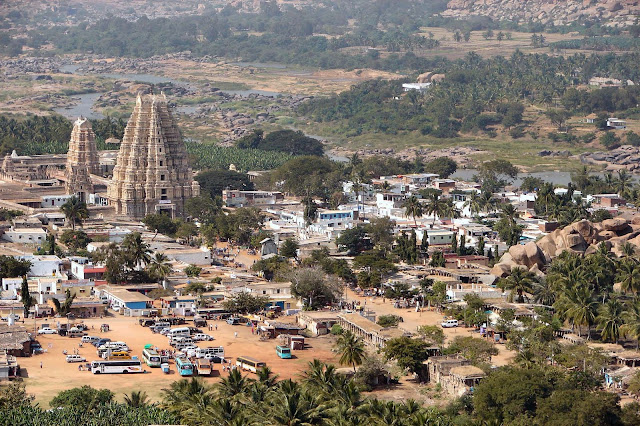




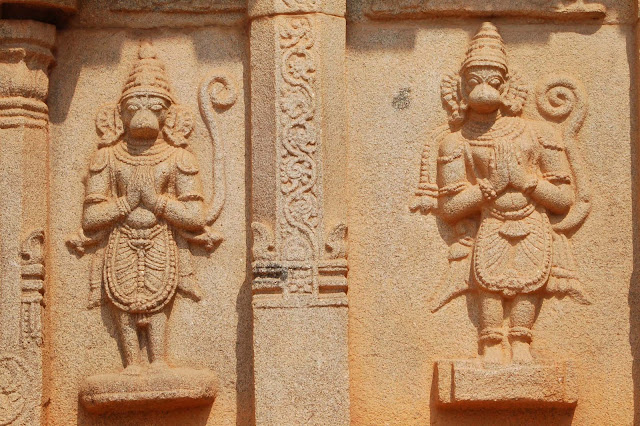
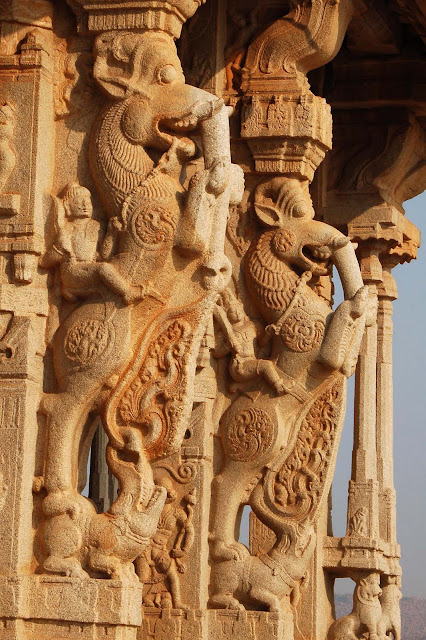


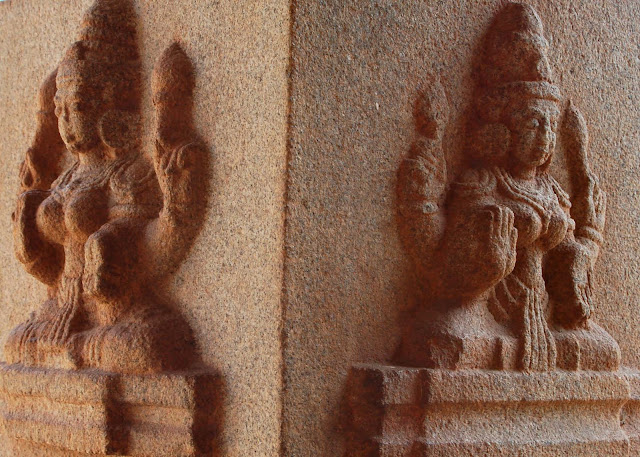





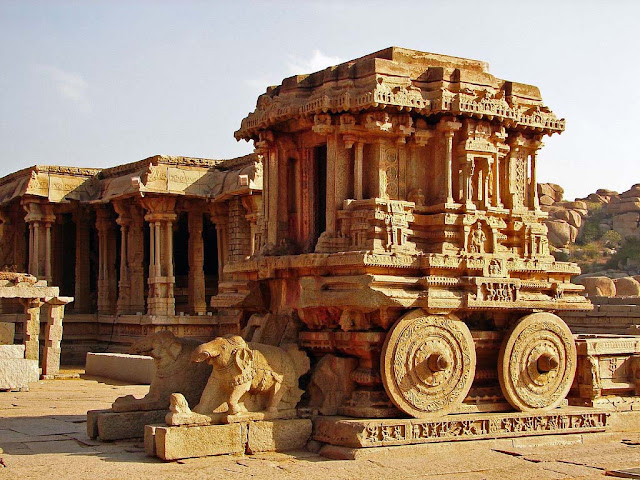




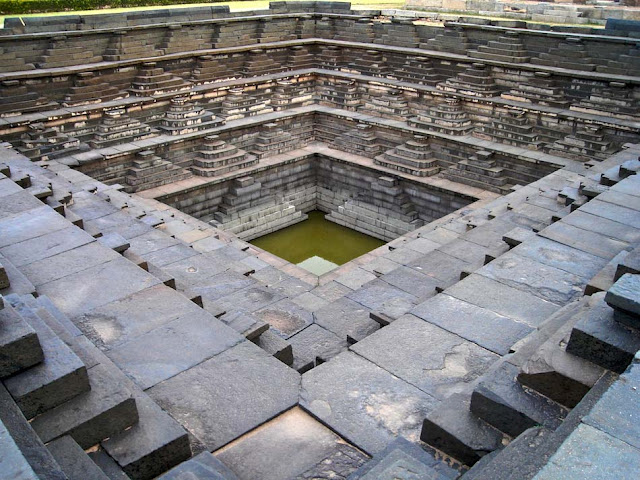
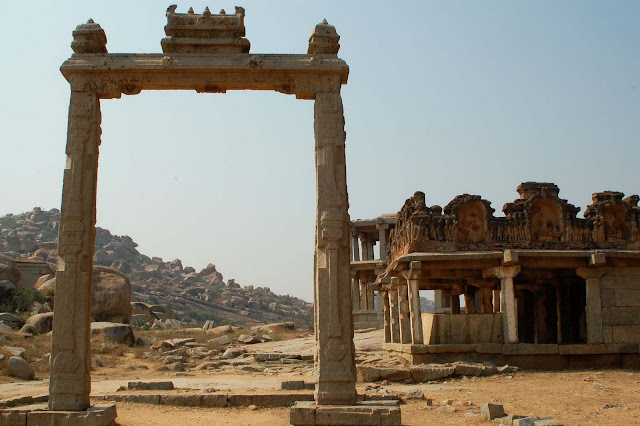




Enter your first comment!